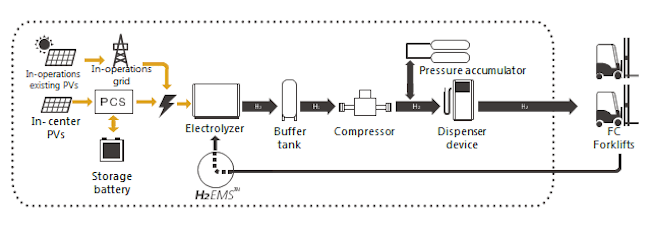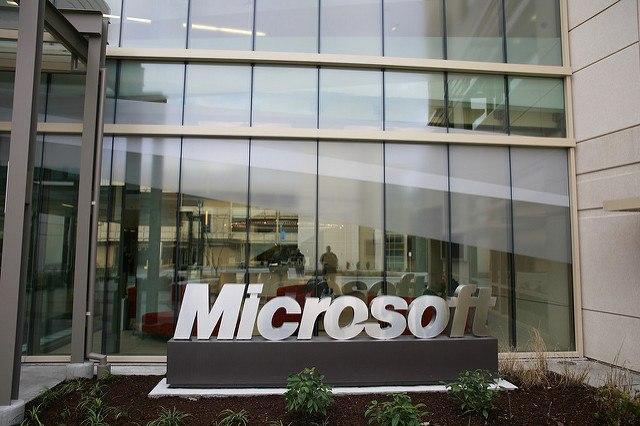Research Center Proposes Carbon Tax on Unsustainable Food


Agriculture has a huge negative impact on the environment, including being responsible for 11 percent of global carbon emissions. Could a carbon tax on food, as proposed by the International Food Policy Research Institute, help make our food system not only more green, but healthier too?
In a report published in the journal Nature, researchers from the institute argue there is immense climate mitigation potential if we just change our diets.
Right now we, as a planet, have an unsustainable food system. We take up huge swaths of the earth for intensive, chemical-laden food production. The least sustainable food, the researchers insist, is red meat. But the problem is that these very foods are, often, the cheapest choices.
This is something all of us experience every day. The true impacts of food are not included in the price we pay at the store, not at all. Go to your local grocery, and you’ll see that organic produce is far more expensive than a factory-farmed piece of red meat, despite the fact that the former has a far smaller carbon footprint. It is why a healthy sit-down, farm-to-kitchen meal is far more costly than a trip to McDonald’s.
Today, in nearly every country, eating sustainably is more expensive than eating unsustainably. For those who are well enough off to choose the sustainable option, that's great. But that is not an option for most people, which is why factory farms are still the norm. When a McDonald’s burger costs 99 cents, that’s what many people will choose.
A carbon tax on food could change this.
“Besides reducing carbon emissions ... a carbon tax could spur innovation to reduce the carbon intensity of future food production, realizing more gains down the line,” three of the report’s authors, Daniel Mason-D’Croz, Keith Wiebe and Sherman Robinson, wrote in a op-ed on Reuters. "Taxing red meat and other carbon-intensive items has the potential to be a global win-win policy."
The best part? Evidence shows that food taxes do work in changing people’s habits. Some places are already taking steps to pass the kind of taxes the institute wants, though they’re not focused on climate. They’re focused on a closely connected issue – health. My current hometown, Oakland, California, approved a soda tax earlier this month. It is a model that is proven to work, as researchers from the University of California, Berkeley found when analyzing that city's soda tax.
Even though the taxes in Oakland and Berkeley do not relate to climate, but health, they end up tackling climate challenges too. Institute researchers argue that there’s quite a bit of overlap between carbon emissions and human health, as foods that are unhealthy, such as red meats or processed sugars, also tend to have a disproportionate climate impact.
“A carbon tax on food, if done right, could help nations meet emission reduction targets while improving nutrition and public health,” added the report’s authors.
So, a carbon tax on carbon-intense foods could have a double benefit: helping our planet while reducing adverse health impacts. Ideally, such a tax could be revenue neutral by subsidizing environmentally-friendly, and healthy, foods such as organic produce, regenerative agriculture or even new products like Beyond Meat.
With the current state of politics in the U.S., it is unlikely that we’ll see a carbon tax on food any time soon. But the idea is there. It’s only a matter of time before some country, or city (Berkeley again?), decides to lead the way.
Image credit: Intermac via Pixabay
Virtual Reality Can Bring Environmental Education to the Next Level


By David Evans
Virtual reality is here, and it’s poised to be one of our greatest conservation tools.
What used to fuel sci-fi imagination can now be experienced in the comfort of your home. Tech is developing faster than most of us can keep up with, and the possibilities for its applications are endless.
One example is the Deep VR project, which transports users under sea for a meditative experience.
https://www.youtube.com/embed/qIhZhdmPQ_8
While the technology is groundbreaking, the concept is simple. Your breathing controls your movement within the underwater virtual reality. Breathe deeper and you move up; breathe shallower and you move down. Imagine an underwater obstacle course designed to steady your breathing with consistent, deep and slow breaths. The result is a VR meditation game that leaves you relaxed and refreshed.
While this immersive experience is only in beta and requires a headset and waist strap, Google Cardboard is a simpler version of VR that is accessible to everyone with a cell phone. For less than $20, you can access hundreds of immersive experiences and start creating your own.
VR in education
VR is positioned to reshape entertainment, but its potential for an educational revolution is even bigger.
Imagine the virtual classroom. Rather than paragraphs of text and outdated pictures, students will go on virtual field trips. Studying benthic marine life in biology class? Let’s fathom the extreme depths of the Marianas in a virtual tour of one of the last frontiers. How about a walk through the streets of ancient Rome or attending Martin Luther King Jr.’s "I Have a Dream" speech in person?
Absorbing information will be faster, easier and more engaging.
So, should we start recording now for the future generations? At the rate we are consuming and polluting, it’s probable that virtual landscapes might be the last remnant of the amazon or the Great Barrier Reef within our lifetime. And we should preserve what we can now.
It’s troubling to imagine our children vividly seeing what they missed out on. While much more encompassing than a written account, the virtual experience just isn’t the same. But it’s impact can be much bigger than even the best Nat Geo footage, and that’s why I think it has the chance to actually help us conserve so these amazing displays of nature will still be there for us to enjoy.
Our biggest problem is we are too disconnected from our impact
The declining health of our planet is redefined and updated on a regular basis. Fifteen years ago articles like this, "Humans damaging the earth faster than it can recover, UN finds," would have been big news, but today they are commonplace. The story of our dying planet is losing shock value and we are overwhelmed, maybe even apathetic.
Environmental problems seem so big and our individual impact is so small. We are lost in the crowd, often feeling powerless. Why vote? Trump can’t possibly win … right? But your vote does count and occasionally we connect the dots in a way that helps us see we, as individuals, actually can influence the way things work.
Documentaries like "Food Inc.," "SuperSize Me" and "Black Fish" have proven to be extremely effective in changing our daily habits and those habits add up. After the release of "Black Fish," SeaWorld’s income dropped by $15.9 million, and the Animal Welfare Act was updated to include cetacean captivity, allocating $1 million to the study of the impact of captivity on marine mammals.
Video is an extremely powerful medium. It’s growing like crazy: YouTube watch time grew by at least 50 percent every year for the last three years -- and we are getting better at using it to tell stories, convey messages and educate.
Reaching the generation that has the power to make change is going to require engaging on a level that resonates with them.
The power an experience can have
The documentary "Planet Earth" had a huge impact on me when I was in high school. The brilliant combination of high-definition cameras and a suspenseful story line transfixed me on the natural world. I felt like I was there watching, and in an instant I cared about something I hadn’t previously thought twice about.
Perhaps the most impactful educational experience is The Overview Effect. People who have gone to outer space and seen the world from above have a life-changing experience that inspires them to become environmental advocates and stewards.
These aha moments of inspiration and epiphany are so critical to every movement. They change habits and the course of history. Everyone will have their cause, and they are all equally important to the big picture.
If we can bring nature to life and educate through new digital mediums, we will be planting the seed for a new generation of innovative and active world citizens that will solve our most challenging problems.
The bottom line: It's time to look closely at tech in education
The closer we get to reality, the easier it will be for us to understand our impact and take corrective action. Innovations in renewable energy and the Internet of Things are expected to provide fixes to our most challenging environmental problems, but tech's biggest contribution might actually be in helping solve our biggest problem: education.
Image credit: Flickr/Maurizio Pesce
David Evans is the founder of prch, a resource for eco-minded men. He is a minimalist, environmentalist, and conscious consumer with a background in environmental studies, conservation, and tech. Learn to improve your environmental and social impact @theprch.
Packaging the Circular Economy: A Holistic Approach to Stuff


Does the circular economy start where it ends or end where it starts? It's the classic chicken-or-egg conundrum.
From the perspective of the consumer-driven linear model to which we are accustomed, the idea of a circular economy may be a bit obtuse, like our opening riddle. Or so it may seem.
What does the circular economy really mean, anyway? After all, we recycle. Isn’t that circular enough?
Linear economic models have clearly-defined beginnings and endings. They are built on a straight line from resource extraction to waste, with an assumption of limitless growth, or at least a lack of concern for any possible limits. And they leave many true costs unaccounted for as “externalities.”
Writing in the Ricardo Energy and Environment blog, Simon Gandy speaks of the common, albeit misplaced, narrative associated with the circular economy:
“The shortest (and most desirable) circular route is to reuse the material, after which we have increasingly large loops associated with recycling and recovery, and often a spur to the dead-end that is disposal.
"Reuse – recycle – recover – dispose … it's our old friend, the (linear yet usually triangular) waste hierarchy! (…interestingly, albeit, almost always without the ’reduce’ option at the top)."
Gandy suggests that typical CET (circular economy thinking) "may focus more on the ‘reuse/recycle’ end of the waste hierarchy, but that is exactly where the hierarchy wishes us to focus our efforts anyway." Recycling is a worthy objective. But too much priority given to this end-of-life aspect of managing material flow, without considering upstream flows, is a relic of linear-systems thinking. Even if it is recycled.
A more robust, holistic mindset for a circular economy goes higher up the waste hierarchy. It presents a wider focus on material properties and flow, as well as externalities and social impact. The chicken and the egg.
From cradle to cradle, go with the flow
The San Francisco-based nonprofit Cradle to Cradle Products Innovation Institute builds on the work of William McDonough and Dr. Michael Braungart. McDonough published "The Hannover Principles: Design for Sustainability" in 1992, and 10 years later he published "Cradle to Cradle: Remaking the Way We Make Things" with Braungart. Based on their foundational work, the Institute administers the Cradle to Cradle Certified Product Program.
The standard guides product design and manufacture through five quality categories covering full lifecycle impact:
- Material health
- Material reuse
- Renewable energy and carbon management
- Water stewardship
- Social fairness
There are five levels of Cradle to Cradle certification, basic through platinum. This framework of quality categories and certification levels allows companies to actively monitor and improve their materials and processes.
Maintained and governed by an 11-member independent Standards Certification Board, the framework is grounded in guiding principles and objectives. Standards evolve through multi-stakeholder input and ongoing research, with Version 4 anticipated for release in 2017. Product evaluation is carried out by a network of accredited assessment bodies throughout North America, Europe, and South America.
Life as a package
Of all the material that makes the products we buy, one of the most ubiquitous and in need of circular economy thinking is the packaging used for all of our stuff. As such, product packaging offers an opportunity to escape our linear-thinking rut and reduce our daily flow of throughput.
It seems so incidental to the matter at hand; there’s a familiar tinge of annoyance, even guilt, digging through the layers of packaging for the products we buy. Under the thrall of buying something fresh, new and useful, packaging is part of the experience. And it's one that is quickly disposed of and forgotten. A quick high.
Throwing all, or at least most, of that packaging into the recycling bin feels like vindication enough. The problem is, as we've noted, we're still stuck in our linear thinking.
Applying the Cradle to Cradle methodology to product packaging is "particularly important," Lewis Perkins told TriplePundit in a recent interview. President of the Institute, Perkins has long been an advocate for sustainability.
"Packaging is an oft-overlooked aspect of mass consumption," Perkins told 3p. "And as such, the opportunity to innovate and scale new materials and new packaging products designed for the circular economy is tremendous."
A "significant proportion" of what goes into landfills around the world is packaging material, much of which consists of plastic, paper, and glass materials -- all of which are recyclable, Perkins said.
"While these items can be recycled, recycling is only part of the solution," he explained. "In order to further reduce the environmental impacts of packaging, including reducing the fast use of resources and raw materials involved in packaging production, companies are recognizing that they need to re-envision the way they design and make packaging from materials to end of life."
Nature's packaging
Circular economic principles align with triple-bottom-line accounting. Cradle-to-cradle methodology is a natural progression as companies adopt the triple bottom line.
Notable examples in the Cradle to Cradle registry include Ecovative, a biomaterials company producing mushroom materials. Developed in partnership with Sealed Air Corp., Ecovative's patent-protected process uses mushroom technology to convert agricultural waste, seed husks, corn stalks, and other crop byproducts into a compostable material. When mixed with mycelium (mushroom "roots"), the result is an alternative to expanded plastic foams, fiberboard and other materials.
Additionally Sealed Air, one of America's largest packaging companies, offers customers a wide range of "right size" food packaging products designed to minimize food waste, reduce plastic use and keep food fresh longer. The company brings to bear more than 50 years of experience developing commercial packaging solutions focused on circular economic principles.
Organizations like the Sustainable Packaging Coalition further engage industry to adopt better material flows and define sustainable packaging solutions.
Challenges
These few examples highlight the steady and determined progress made for packaging that meets cradle-to-cradle standards. But as with all "alternative" solutions, challenges remain.
Perkins cited issues of scale, policy and procedure. "Scaling up materials and products to standards does require time and investment," he conceded.
"In order to successfully replace traditional packaging en masse with packaging that meets cradle-to-cradle standards, companies must ensure the new materials and products perform to the same or higher standards for their intended functional applications – whether that’s impact protection, temperature regulation, materials handling, food and beverage containment, household goods, cosmetics, or consumer-facing packaging."
Materials recovery is another challenge, Perkins explained.
It's all about "closing the loop on scaling systems and processes for recovering packaging after it has been used so that those materials can remain in a perpetual, cradle-to-cradle cycle of use and reuse," he told 3p.
Waste not, want not
So, where does that leave us? For the most part, in a linear economy. But, just as with fossil fuels, the momentum for change continues to build as more companies realize the eonomic, environmental and social benefits of circulur economic thinking.
We live on a planet with finite resources sought after by more people. A linear mindset, no matter how firmly ingrained, will soon no longer be viable.
"As global material consumption continues to increase, we face a looming shortage of raw materials available for the manufacture of all kinds of products,” Perkins insisted.
"In order to keep pace with escalating consumer demand worldwide, we need to develop new ways of designing and making products with materials that can remain in perpetual cycles of use and reuse," Perkins said. "This new circular economy will help decrease our collective dependence upon virgin raw materials and, ideally, eliminate the concept of waste entirely from our systems of production and consumption."
Waste not, want not; a timeless phrase never more apropos than it is today.
Image credits: Ruben Alexander, courtesy Flickr; Tom Schueneman
Preventive Healthcare Initiatives and the Knowledge Gap


A number of diseases and conditions can be prevented through early intervention and screenings. “Following your doctor’s preventive health advice can make all the difference in your health,” the Henry Ford Health System advises.
The reason why is simple: It is far easier and less expensive to prevent an illness than treat or manage it. And catching some illnesses early, like cancer and heart disease, can mean the difference between life and death.
Reducing or eliminating risk factors for common chronic conditions is important. Those include smoking, obesity, high blood pressure and high blood sugar, and preventive medicine can reduce or eliminate them. Screening tests, such as mammograms, colonoscopies and full-body skin exams, are another preventive tool that can help identify if someone is at risk for developing a condition or disease.
Not sure why you should care? Consider this: Chronic diseases, like heart disease or diabetes, are responsible for 7 out of 10 American deaths every year and account for 75 percent of the country’s health spending. Preventative measures such as eating health and exercising regularly, combined with health screenings, can make a big difference.
Despite the benefits of preventative care, the Centers for Disease Control and Prevention (CDC) estimates that Americans use such services at about half the recommended rate.
This trend is even more curious because Americans can access preventive services without cost-sharing fees like deductibles, copayment or co-insurance under the Affordable Care Act (ACA, commonly known as Obamacare). Such fee-free services include diabetes, cholesterol and blood pressure screening.
A 2015 study looked at the impact the ACA fee-free requirement had on preventive care services at Humana, a large national health insurance company. Curiously, researchers found no significant change “in the level or slope of colonoscopy and mammography utilization for intervention plans relative to the control plans.” In other words, people weren’t getting colonoscopies and mammograms despite the ACA requirement that they be free.
How can we get more people to access preventive services?
The fact that many Americans are still not using preventive services means they need to be educated about the importance of prevention.
A number of organizations, including governmental ones, are looking to spread the word about preventive care. One is the National Prevention Strategy, which the CDC describes as a “comprehensive plan that will help increase the number of Americans who are healthy at every stage of life.”
Called for by the ACA, the plan was created by the National Prevention Council. Also an ACA requirement, the council is made up of the heads of 17 federal agencies and is chaired by the Surgeon General.
What the strategy recognizes is that good health is about more than receiving quality medical care; it is about preventing disease. It focuses on seven priority areas: tobacco-free living, substance abuse prevention, healthy eating, active living, injury- and violence-free living, reproductive and sexual health, and mental and emotional well-being.
The Watts Health Center in Los Angeles also developed a Preventive Health Services Program to improve patients’ health. The program is made up of a number of components, including educating residents and businesses about the dangers of smoking. People are encouraged to called the number 1-800-NO-BUTTS to help them quit. The staff at Watts works with community organizations and helps them develop and implement smoke-free policies. Individual and group counseling is provided for people who want to quit smoking.
In another best-practice example, the Fresno County Department of Public Health (DPH) works on a number of initiatives to both educate people about prevention and reduce risk factors for disease.
The DPH doesn't execute these initiatives on its own, but partners with other organizations to truly move the needle on public health. “These issues are quite large and daunting, and no single organization can be successful by themselves,” Sara Bosse, manager of the Fresno County DPH Office of Policy, Planning and Communication, told Triple Pundit.
One of its flagship initiatives is a diabetes collaborative called Fresno Diabetes, which is part of the Fresno Community Health Improvement Partnership (FCHIP). The group set up a website to give Fresno County residents information about diabetes and prevention of the disease. County residents can take a type 2 diabetes risk quiz.
“Prevention is really important,” Bosse said. “There are a lot of chronic diseases people suffer from. There are a lot of risk factors. There are behaviors such as diet, exercise and smoking that contribute to the risks for developing chronic diseases.”
Lack of access to fresh fruits and vegetables is a big risk factor for developing certain diseases such as heart disease and diabetes. And low-income people living in food deserts often do not have access to fresh fruits and vegetables.
The U.S. Department of Agriculture (USDA) defines a food desert as parts of the country that lack access to “fresh fruit, vegetables, and other healthful whole foods, usually found in impoverished areas.” Many food deserts exist in Fresno County, and the DPH has several initiatives to address the problem.
It partners with Fresno Metro Ministry on a program called Food to Share. Food that would go into landfill but is still edible is collected from a variety of places including farmers markets, foodservice facilities, restaurants, supermarkets, and growers and packers. Organizations and ministries then distribute the collected food to underserved communities within Fresno County at no cost.
The San Joaquin Valley, where Fresno County is located, is considered by many to be the agriculture center of the world. It supplies a good deal of the fruits and vegetables Americans eat. But some residents of the Valley, including in Fresno County, can’t access what is grown in their virtual backyards. So, as part of its work, the DPH also works "with partners to increase distribution sites for CSA (community supported agriculture) boxes,” Bosse said.
For those who aren't familiar, a CSA is a pre-made box of produce that is delivered from a local farm to a distribution site or a person's front door. They are typically available in high-income neighborhoods. “What we have done, and we are just getting started with, is expanding CSA availability to lower-income neighborhoods,” such as church and school sites, Bosse said. The department also works with CSAs to offer the use of EBTs (electronic benefit transfer, commonly known as food stamps) to pay for the boxes.
The bottom line is: It's time for Americans to take greater responsibility for their own health. With low-cost preventative care available through ACA, and a growing number of local organizations looking to boost wellness across the country, we really have no excuse.
Forklifts Powered By Hydrogen Get a Thumbs Up From Toshiba


Hydrogen fuel cell vehicles are having a tough time competing with their battery-based cousins in the race to dominate zero-emission personal mobility on the open road. But the business community is discovering one area in which fuel cells have a clear advantage. That would be the logistics sector, where moving goods around warehouses is a delicately timed race against the clock.
In the latest development, Toshiba is touting a new transportable, renewable hydrogen-based emergency generator. The tech giant hopes to demonstrate the generator as the basis for permanent hydrogen fueling stations that could serve forklifts and other vehicles at warehouses, factories, airports and elsewhere.
That's good news for fuel cell electric vehicle fans. Flipping the hotly competitive logistics sector to hydrogen would mean that R&D will develop apace, helping to push lower costs and higher efficiency into the EV market.
Toshiba and renewable hydrogen
Toshiba is starting off on the right foot when it comes to hydrogen fuel. Instead of sourcing hydrogen from natural gas, Toshiba developed its H2One transportable hydrogen system as a renewable energy product.
The company deployed a large-scale version of H2One last year in the city of Kawasaki, Japan, to demonstrate how the system can operate both as an emergency source and as a way to relieve the grid from peak-use spikes.
Here's the rundown from Toshiba:
"H2One combines photovoltaic installations, storage batteries, hydrogen-producing water electrolysis equipment, hydrogen and water tanks, and fuel cells," Toshiba says. "Electricity generated from the photovoltaic installations is used to electrolyze water and produce hydrogen, which is then stored in tanks and used in fuel cells that produce electricity and hot water."
As an emergency power source, the Kawasaki installation can provide electricity and hot water for around 300 people for about a week.
The ultimate goal of the demo project is to develop a renewable hydrogen system that can operate independently as a long-term strategy for local communities to go off-grid.
Toshiba introduced a scaled-down version of the system earlier this year that can be transported easily by two 4-ton trucks for mobile disaster response. As with the larger version, the system "splits" water using an electrical current that is powered by solar energy.
The mobile system illustrates how Toshiba is continuing to improve on H2One:
"The H2One Truck Model’s hydrogen storage tank is made with a new hydrogen storage alloy that achieves much improved high-density storage. This advance contributes to system mobility and improved flexibility," the company says.
Renewable hydrogen and logistics
Toshiba notes that renewable hydrogen fuel cells easily beat diesel generators as a disaster-relief energy supply. They are quiet and non-polluting, and their fuel can potentially be scavenged on-site rather than depending on fuel convoys.
Those advantages are also true of battery-powered generators that are charged from solar or wind energy.
The zero-emissions angle makes both batteries and fuel cells ideal for the logistics field. Zero-emission vehicles are especially important for warehouses and other confined spaces. They are also becoming increasingly important at seaports and other congested transportation hubs, where improving outdoor air quality is imperative.
When it comes down to the factors of time and space, fuel cells do have an advantage over batteries. A fuel cell forklift can be refueled in a few minutes. That relieves facility managers from the headache of orchestrating operations around battery recharge times and swap-outs. It also frees up the space that would otherwise be devoted to battery charging and storage.
Zero-emissions forklifts
That brings us to Toshiba's latest announcement, the Hydrogen Application Center. Located at Toshiba's Fuchu Complex, the new facility consists of a H2One system specially designed as a fueling station for hydrogen fuel cell forklifts.
Toshiba has big plans for the new facility.
Mr. Hiroyuki Ota, project manager of Toshiba’s Energy Systems and Solutions (ESS) company, noted: “The Hydrogen Application Center is a stepping stone to building a new business. We will utilize experience and know-how gained from the Hydrogen Application Center to develop and deliver a H2On for use in factories, warehouses, logistics facilities and airports."
That's just for starters. Toshiba wants the Fuchu Complex to be viewed as "the realization of a carbon-free society where hydrogen energy is widely used," Mr. Ota said.
Along with H2One, the facility deploys Toshiba's companion hydrogen energy management system, the H2EMS. Among other efficiencies, the system optimizes refueling, so space for hydrogen storage can be kept to a minimum.
Back in 2011, TriplePundit took note of the important role that logistics will play in decarbonization. It looks like Toshiba is determined to lead the trend.
Toyota also has big ambitions for the zero-emissions economy of the future, so stay tuned for more on that.
Images courtesy of Toshiba
Will Trump Policies Kill The Electric Car?


The president-elect has vacillated on the environment as of late. On the one hand, during his campaign he promised to “cancel” the Paris climate agreement and called climate change a “hoax.”
Then, in an interview with the New York Times last week, he appeared to soften his approach and said he would keep an “open mind” on the Paris agreement. His chief of staff, Reince Priebus, then went on Fox News Sunday to clarify, saying: “He’ll have an open mind about it but he has his default position, which most of it is a bunch of bunk.” So, it doesn’t take huge powers of deduction to conclude that things don’t look so good for the environment after all.
So what's really going on and what will happen to the EV industry?
As we reported last week, Trump’s energy policy could likely hobble American clean-energy initiatives. On top of that, since his “open mind” seems tenuous and will be coupled with a Republican-controlled Congress, there appears to be little reason for optimism that electric vehicles will garner favorable policy positions, let alone an even playing field.
We can easily identify the risks EVs face. One of them is independent of Trump, and that’s a protracted period of cheap gasoline which has already lured some motorists back into less efficient SUVs. And since no fuel price spikes appear to be on the horizon, cheap petroleum could have a significant drag on demand for some time.
But a significant problem Trump could cause would be the removal of the $7,500 federal tax credit consumers enjoy when they buy or lease an electric vehicle. If Trump were to come down heavily in favor of the fossil fuel industry, removing the EV tax credit seems like a plausible move to undercut demand. But the tax credit can't be eliminated by executive order. Instead, Congress would have to act, which would take time, especially as the EV tax credit is part of the larger federal tax code.
Another area where Trump could have influence is on the 2025 U.S. fuel economy standards. The Alliance Of Automobile Manufacturers, an auto-industry lobbying group, reached out to the Trump team just two days after the election and urged them to revise the standards, Fortune reported.
As it stands, automakers must meet a fleet-average of 54.5 miles per gallon by 2025. But this is subject to a mid-term review in April 2018. At that time, the EPA and the National Highway Traffic Safety Administration must decide whether to maintain these fuel-efficiency targets or change them if they are not deemed viable.
The Alliance of Automobile Manufacturers represents the major car companies, and cautions cheap gas and weak demand for EVs are undercutting the viability of reaching the 2025 fleet-average mpg targets. Since selling alternative-fuel vehicles, like EVs, would help achieve those targets, the industry appears to be looking for some wiggle room.
In combination, these factors align to offer formidable headwinds to the growth of electric vehicles, which in any case remains a tiny slice of the overall global automobile market, at just 0.10 percent.
On the other hand, several factors bode well for the future of EVs.
Global environmental policy is on the side of electric vehicles. Firstly, the American government doesn’t legislate for the world, and there are favorable policies coming forward from foreign governments all over. Even if the Trump administration reneges on the Paris climate agreement, other countries will sustain the fight against global warming, with or without America’s leadership.
For example, China will act out of self interest. The country loses 1.6 million lives a year due to air pollution, prompting the Chinese to take air pollution as seriously as climate change (which is very much related). The country's suffocating air is largely due to coal-fired power stations but as the Wall Street Journal reports, the Chinese government recently introduced new regulations to penalize automakers that produce an insufficient number of electric, plug-in hybrid and fuel cell cars. By 2018, such cars must account for 8 percent of a manufacturer's production, rising to 12 percent by 2020. This share is significant in a market with annual sales of 20 million cars and growing.
China’s action, the WSJ reported, has already practically forced Toyota to get behind producing fully electric cars -- something the company was reluctant to do up to now.
The same goes for Volkswagen. The German automaker's diesel emissions scandal proved to be somewhat of a catalyst for bolstering its focus on electric vehicle development. VW’s new focus on EVs marks “a new strategy in a rapidly changing car market,” Christian Stadler of the U.K.’s Warwick Business School told the BBC, specifically citing China’s new rules. It is worth noting as well that China is already the world’s largest EV market.
In Europe, too, the tide is moving toward electrics. Incentives in Norway, such as lower taxes, free use of toll lanes and access to bus lanes, are successfully driving sales. Now, almost a quarter of new cars sold in Norway are electric.
And in a bold move, Germany’s Bundesrat, a legislative body representing the country’s 16 states, recently passed a resolution to completely ban EU sales of vehicles with internal combustion engines starting in 2030, Forbes reported. It's a non-binding target, because the German Bundesrat cannot legislate for the whole EU, but German regulations have traditionally shaped EU regulations, Forbes contributor Bertel Schmitt pointed out.
Which, by the way, is similar to how California regulations tend to influence auto regulations for the rest of United States. The Detroit Free Press reminds us that the California Air Resources Board will require zero-emissions vehicles to account for 22 percent of automakers’ sales by 2025. This requirement is independent of federal changes that may take place under Trump, and California’s influence as the country’s largest car market has nine other states aligning with it on common targets.
It’s hard to imagine, then, that in an industry as globalized as the car business, and with these legislative forces in play, manufacturers can possibly back away from electric vehicle production -- no matter what a Trump administration does.
Important performance milestones
But another thing EVs have going for them, beyond favorable global legislation, is the fact that we have reached some performance milestones that further assure their long-term future.
Such milestones address key consumer concerns with electric cars. This month, Chevrolet began shipping its new pure electric vehicle, the Bolt. The company claims the car can travel 238 miles on a single charge and will cost $30,000 after the federal tax credit. The Bolt tackles the common range-anxiety problem and begins to address concerns over affordability.
Of course, there are more affordable conventionally powered cars available today, and if the tax credit goes away, affordability would be adversely impacted. But even so the Bolt, and Tesla’s forthcoming Model 3, both promise a driving range that overcomes range anxiety -- and they do so at a sub-luxury-car prices. Furthermore, costs will only drop from this point.
This is because battery costs continue to fall. They're already down 80 percent since 2008, the Economist reported, and Tesla estimates its new Gigafactory in Nevada will bring the cost of batteries down to lower than $100 per kilowatt-hour by 2020. At that price, batteries start to become cost-competitive with oil without subsidies.
The latter point is important, at least in the U.S. market: Even if the incoming administration and Congress eradicate the federal tax credit, ultimately this benefit self-expires anyway. The $7,500 tax credit ceases to apply once a manufacturer exceeds sales of 200,000 units, after which the amount halves progressively with additional units sold, eventually falling to zero.
So, in the long run, EVs will have to be price-competitive without tax incentives in the U.S. market. Bloomberg reports Tesla will probably cross this line by the first half of 2018. The electric vehicle company has proven to build cars people aspire to owning, with high levels of performance. And this point might prove to be the real clincher: EV performance is ultimately headed toward exceeding that of the internal combustion engine at price parity. True, EVs are not over the hump with regard to price and range, but the trend is always moving in the right direction.
It's a long game
All things considered, momentum seems to be with electric vehicles when viewed on a global basis. In the immediate term, the market in the U.S. might slow or contract under the new administration. But EV market share will grow in places where governments impose tougher regulations than in America. And car makers, no matter where they are based, will want to have a piece of that growing market, or at least continue to develop EVs to hedge their bets.
This has always been a long game. It’s not hard to imagine future oil price increases will quicken the pace of EV uptake -- oil is, after all, an historically volatile commodity. And coupled with ongoing incremental improvements in battery technology, and perhaps even new breakthrough battery chemistries, manufactures are highly unlikely to abandon their investment in electric cars.
Photo by author
Microsoft Makes Diversity Financially Rewarding for Execs


Microsoft is doubling down on corporate diversity just in time for the New Year (or the new Trump presidency, depending upon how you look at it).
While most companies answer the need for greater diversity with New Year's resolutions to revamp hiring quotas, review corporate culture and restructure talent searches (all of which Microsoft has undertaken in the past), the company is looking at a new approach this time. And it may just offer the incentive needed to finally change those diversity numbers.
The solution? The software giant plans to link diversity stats to corporate bonuses.
Microsoft revealed earlier this month that while diversity in its workforce is increasing, its female representation slipped last year -- for the second year in a row. Gwen Houston, Microsoft's chief diversity and inclusion officer, blamed the shift on restructuring efforts in its phone hardware business, where there was a higher representation of women employees than in other parts of the company. But she acknowledged that the loss called for new approaches and a "deepening commitment" to increasing diversity in the company's ranks.
Microsoft's proposed strategy, which includes making diversity gains a requirement for senior management compensation, isn't an entirely new idea.
The United Kingdom launched a charter in May to inspire banks to increase gender diversity in senior positions. The program is voluntary, but has already been adopted by many of the U.K.'s largest banks. And some 60 companies pledged to fill a third of their management positions with women by 2021.
But Microsoft's diversity plan goes further than that: The company's targets include ensuring the workplace is not only diverse in talent, but also inclusive in nature, Houston said. Ongoing internal diversity training programs and new strategies to broaden the net for diverse talent will complement the mandatory requirements for senior management.
I wondered whether this new approach could also help to test the boundaries of what is called "diversity." Will managers be required to ensure disabled workers are part of that definition? Granted, the American with Disabilities Act (ADA) requires employers to make "reasonable accommodations" for disabled workers. How will departments be required to meet (and hopefully improve against) that challenge? And while Microsoft has been actively working to expand its hiring of minorities and women, are there other ways it can help broaden society's appreciation of and respect for multiculturalism in the workplace?
Microsoft CEO Satya Nadella told Fortune he is already thinking about the broader landscape of diversity and inclusion. Nadella has a child with special needs and appreciates the challenges that accessibility needs can create, both in and outside of the workplace. He said he knows diversity isn't defined by numbers or federal census, but by human experience.
With the anticipated changes to federal priorities in Washington, Microsoft's innovative approach to diversity and inclusion couldn't come at a better time.
Image credit: Flickr/Robert Scoble
India’s Currency Recall: Reform or Punishing the Poor?


A harbinger of Donald Trump’s election occurred two years ago in India, when a wave of populism and frustration with the system led to Narendra Modi’s swearing in as India’s prime minister. Like Trump, Modi promised to boost manufacturing, revamp the country’s infrastructure, slash bureaucracy and fight corruption.
On that last point, Modi announced in a televised address this month that the world’s second most populous country would undergo shock treatment in a move to boost tax collection and increase transparency. The country’s 500- and 1,000-rupee banknotes would no longer be legal tender, and would be replaced with new 500- and 2,000 bills. Citizens have the rest of the year to deposit their older notes, but limits were imposed on how much old currency could be exchanged.
The demonetization policy was presented as a way to expose those with copious amounts of “black money,” although the Modi administration also claimed the old 500 and 1,000 notes were being counterfeited to fund terrorism. But if Modi is going to pay for his ambitious domestic policy agenda, he will need funds – and estimates suggest that less than 1 percent of the country’s 1.2 billion citizens pay taxes.
The logic follows that a large bank account translates into big income, which means more people will be forced to pay their fare share of taxes. And if more money is held in banks, Modi's administration thinks more citizens will pay for goods and services digitally instead of with paper.
The evidence suggests, however, that while the idea has merit, the execution has gone awry – and not just because the digits printed on the new 2,000-rupee note are numerals not permitted by India’s constitution. This currency recall is part of Modi’s plan to extract money illegally stashed abroad in order to redistribute it to India’s poor – but so far Modi’s gamble may be hurting those who have long struggled within the country’s economy.
First, Modi’s plan does not do anything to address wealthy Indians’ money that is sequestered overseas. In addition, the appeals to deposit that money ring hollow in a country where 90 percent of all transactions are conducted in cash. And as the BBC reported, the notes in question represent at least 86 percent of the country’s banknotes in circulation. Many Indians are unbanked; culturally, millions do not trust the country’s financial system and prefer to keep their funds hidden at home. Those who have the means may very well have amassed wealth without paying taxes on it, but much of that money has since been converted into property, gold and jewelry.
The sudden change in currency leaves India’s rural poor most vulnerable. Many of these citizens do not have a bank account, nor do they have the phone or wireless service needed to take part in the emerging digital economy. As economist Rajiv Biswas explained last week in an interview with Deutsche Welle, Modi’s reform is punishing the poorest citizens as they can no longer buy what they need with bank notes that have become suddenly worthless. Wealthier citizens, however, can ride this out. After all, they most likely can tap into gold bullion or foreign currency.
Incidentally, this currency reform will cause a massive waste problem for India, as those 20 billion notes to be taken out of circulation will have to be shredded and dumped at landfills. That imagery will no doubt stick in the minds of many Indians, as they feel Modi has accomplished little with this stunt other than trashing the economy.
Goldman Sachs has reportedly revised its economic forecasts for India, knocking it down almost 1 percentage point as the shortage of cash will most likely dampen economic activity for several months.
Image credit: Reserve Bank of India
Why Corporations Set Internal Carbon Prices


Editor's note: This is the third article in a three-part series on Corporate Offset Programs. The first piece explored why to purchase offsets; the second piece explored why buyers develop and implement offset programs. This follow-up article examines the role of internal carbon prices.
By Sheldon Zakreski
When companies first began pursuing ways to reduce their carbon footprints, efforts often took the form of a budgeting and activity-based exercise. Companies set a target, allocated a budget, and focused on discrete measures — such as energy efficiency, renewable energy and carbon offset purchases. It was unheard of for a company to place an internal price on carbon.
But businesses are coming to realize that there is strategic value in imposing an internal carbon price. According to the Carbon Disclosure Project (CDP), a global system disclosing the environmental impacts of companies, cities and regions, more than 500 companies reportedly used an internal carbon price last year. This is three times greater than 2014. Keeping the momentum going, another 732 companies reported to the CDP their plans to implement an internal carbon price in 2017 and 2018.
The reported price range is broad, starting at 30 cents and going up to almost $900 per metric ton of carbon dioxide equivalent emissions (mtCO2e). To put this range into context, regulatory programs in North America have carbon prices ranging from $5 to $30 per metric ton, while the U.S. government's current estimate of the social cost of carbon is approximately $40 per metric ton.
Companies are increasingly sophisticated in how they approach this issue -- establishing multiple and dynamic prices that take into account different jurisdictions where they operate, the urgency to lower emissions, and trends in regulatory carbon price levels.
So, what’s driving this trend in corporate carbon pricing?
Assessing the impact of carbon pricing regulation
The World Bank’s most recent State and Trends of Carbon Pricing report observed that several companies in Canada and the U.S. adopted internal prices similar to the compliance prices used in California and the Canadian provinces of Alberta, British Columbia and Quebec. These prices range from $11 to $23.
Indexing internal prices to compliance market prices helps companies to understand how their business can best adapt should they become subject to broad-based carbon pricing regulations.
Inform internal decision-making
Energy companies in particular are notable users of internal carbon prices. For example, both Shell and ExxonMobil integrate carbon prices to understand the future economics of existing and planned oil extraction projects. Exxon assumes a rising price that will reach $80 in 2040. The adoption of dynamic carbon prices allows them to better inform the financial benefits and risks of investing in new projects, which require billions of dollars of capital today.
Risk management
While managing risk is related to the above driver, especially for energy companies, a wide swath of businesses understand that their future stock price value faces climate risk, whether they have a large carbon footprint or not.
Notable examples of companies that aren’t energy-intensive users, but face great exposure to climate change impacts, are reinsurance companies; that is, companies that provide insurance to insurance companies themselves. This industry is susceptible to much risk, given that they must pay policyholders substantial sums of money for damages incurred following extreme weather events.
Many other companies are also beginning to realize the need to take action, as investors increasingly raise concerns about the risks climate change poses to the financial bottom line. When BlackRock, the largest investment firm with $5.1 trillion under management, calls for investors to examine the climate exposure risk of potential investments, companies listen.
Spur innovation
As noted earlier, initial efforts to address a company’s carbon footprint are often focused on discrete activities such as energy efficiency and renewable energy. But as companies address their “low-hanging fruit” opportunities and supplement with offsets, they face the challenge of what to do next to address their emissions. This is where an internal carbon price can help.
Putting a price on emissions helps companies to not only focus on the cost-benefit analysis of different options, but to also better assess how innovative measures can play a role. Renewable energy is an example of how internal prices can help company views evolve regarding which strategies to pursue. Many companies initially purchased renewable energy credits from external projects, however, internal carbon prices can help them to evaluate the merits of developing their own renewables projects — such as biogas=powered server farms for high-tech companies like Google, Microsoft and Facebook, or onsite energy generation technologies like fuel cells.
The adoption of internal carbon prices is a welcome trend that represents not only the increased maturation of companies when it comes to addressing their carbon footprint, but also a clear signal that businesses view widespread carbon price regimes as inevitable. This trend will continue to grow as businesses exhaust the low-hanging fruit options available to them, and increasingly respond to growing investor sentiment that climate change poses a significant financial risk to their bottom line.
Image credit: Flickr/Damien McMahon
Sheldon Zakreski is the Director of Carbon Compliance for The Climate Trust.
Infographic: Value Recovery

